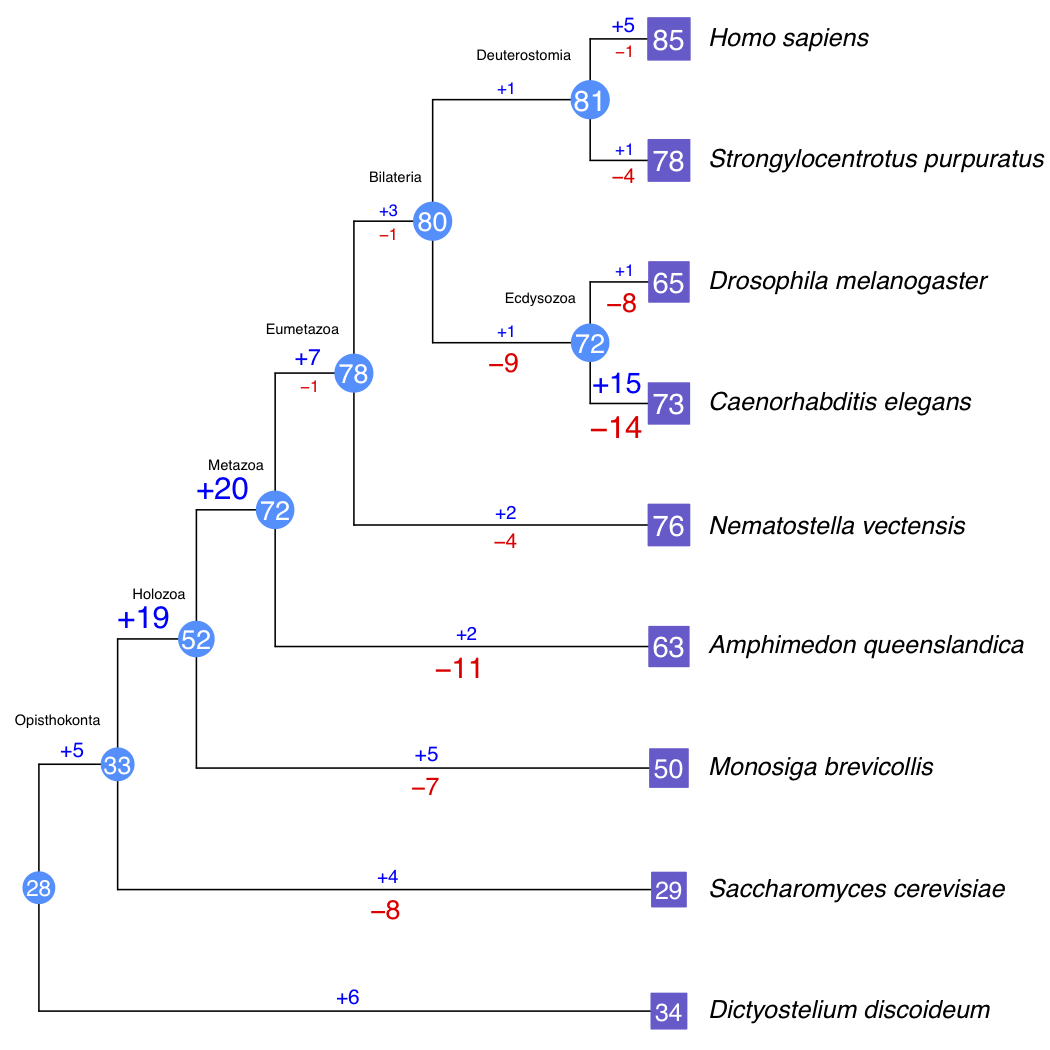Phosphatase Evolution
Nine Phosphatomes
We define the phosphotomes of human, three other bilaterians (sea urchin, fruit fly, and Caenorhabditis elegans), two basal metazoans (the anemone Nematostella vectensis and the sponge Amphimedon queenslandica), the unicellular choanoflagellate (Monosiga brevicollis) which is the closest living lineage to metazoans, a yeast (Saccharomyces cerevisiae), and Dictyostelium discoideum.
Through searching genomic and protein sequences followed by extensive gene model curation, we identified 1229 protein phosphatases in the nine organisms, including 43 phosphatases that are not present in the predicted proteomes. These phosphatases are further classified by their sequence similarity, domain combination, and known molecular function (see here).
Conservation of protein phosphatases
Phylogenetic comparison of the human phosphatome with those of eight other species shows that all phosphatase superfamilies found in human are shared from Dictyostelium to human. Of 85 human subfamilies, 59 are conserved as deep as to sponge, and these presumably serve functions essential for the existence of metazoans. We found 44 subfamilies present in both human and the single-cellular organism Monosiga, and even 24 between human and yeast, and 27 between human and Dictyostelium.
Gains and losses of subfamilies
We inferred the gains and losses of subfamilies by predicting whether ancestral genome has a subfamily by its presence and absence in the extant genomes in this study. The phosphatome expanded dramatically during the emergence of holozoa and metazoa, with the number of subfamilies increasing by one half and one third, respectively. These increases are mainly due to the expansion of Class I Cys-based superfamily. Around two-thirds of the subfamilies gained in holozoa and metazoa (19 and 21, respectively) belong to this superfamily (11 and 13). Dramatic gains and/or losses of subfamilies also happened in individual lineages. In C. elegans, more than a dozen subfamilies were gained, meanwhile more than a dozen were lost. In contrast to the similar extent of gains and losses in C. elegans, fruit fly lost 8 subfamilies but only gained 1 subfamily.
